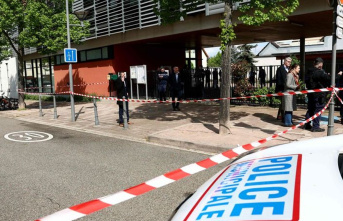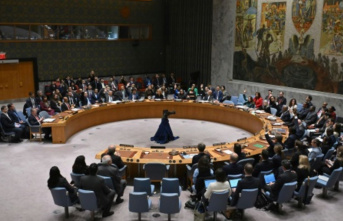Self-consumption has just begun to emerge in Spain and the landing of foreign companies and investment funds to gain a foothold in the market has not been long in coming. In a country like ours with more than 2,500 hours of light per year (in some regions even over 3,000) and with a consolidated electricity network, it is to be assumed that solar energy is an attractive business. But it has been a new regulatory framework from 2019, which favors the implementation of photovoltaic installations for own consumption and, above all, aid from European funds to finance them (as well as those from autonomous communities and tax exemptions, such as the IBI, offered by many town halls) which is giving a strong push to the self-consumption segment.
In addition, a situation like the current one with high energy prices, which seems to be difficult to lower in the short term, is pushing many single-family homes, SMEs and businesses to advance the decision to have as much energy self-sufficiency as possible and thus lower the bill of the light.
The data reflects this. According to the Spanish Photovoltaic Union (UNEF), since 2018, the year in which the well-known sun tax was eliminated, the trend indicates that self-consumption increases every year in Spain. In 2019, 459 MW of power were installed, in 2020 another 596 and in 2021 it doubled to 1,203 MW. 41% was in the industrial sector, 26% in the commercial sector and where there was a strong push was in the residential sector, which went from accounting for 19% of all new installed power for self-consumption in 2020 to representing 32% the year past.
UNEF calculates that in total there are 3,240 MW installed for self-consumption throughout the country. If we take into account that the Self-consumption Roadmap estimates that between 9,000 MW and 14,000 MW of power can be reached in 2030, there is still a long way to go. A handicap that does not escape foreign companies, which are moving to gain a foothold in this market. “We are seeing two types of foreign companies. On the one hand, companies specializing in self-consumption that want to expand their activity and investment funds that see that the land market is saturated and are looking for new lines of business. They invest mainly in the industrial sector with important projects”, indicates José Donoso, general director of UNEF.
A phenomenon that has also been detected by the engineering and consulting company Haz Energía. “Many foreign companies and investment funds with capitals of more than 50 million euros are entering to invest in self-consumption over the next four years. It is a very dynamic market with a lot of potential”, says Pablo Corredoira, partner of this company.
It is in the residential sector where the great explosion of self-consumption is expected in the coming years. And it is not for less, because with these facilities a succulent bite is given to the electricity bill. According to data from UNEF, having solar panels on the roof of a chalet means a saving in the variable part of the bill of 35%. Other estimates suggest that it reaches 50% and some companies even say that they already have clients who exceed 90% savings. The German company Solarwatt has made a calculation: a family of four with a house of 120 square meters can save more than 1,600 euros a year on electricity.
There is also another advantage: the installations are usually amortized in about 7 or 8 years and have a useful life of between 25 and 30 years. Its cost ranges between 6,000 and 8,000 euros depending on the number of panels, whether or not a battery is placed to accumulate energy (and, for example, consume it at night) and even if the surplus is poured into the network and which is financially compensated in the electricity bill by the marketers.
According to the INE, in Spain there are almost six million single-family homes. Although it is not known for sure what percentage of them already have solar panels. However, the Norwegian company Otovo has made an estimate: «Many of these homes are second homes where it is not interesting to install panels because the family does not live in it. So we estimate a potential market of about three million homes. And today we do not reach 100,000 installations. That is to say, little more than 3%”, considers Iñigo Amoribieta, general director of Otovo Spain. Therefore, if domestic self-consumption offers so many saving advantages, at a time of energy crisis like the one we are experiencing and there are still millions of homes without solar panels on their roofs, it is certainly time to enter the market.
The Norwegian Otovo did it in 2019 when “the regulation was changed to facilitate self-consumption. Now it is no longer necessary to request authorization from the distributor to have a photovoltaic installation in a house, and they can also compensate you for the surplus. This makes self-consumption more profitable and simpler," says Amoribieta. This company already has 3,000 domestic installations in Spain.
This has also been perceived by other foreign entities, which open new lines of business or new companies to meet this demand. For example, the South Korean Hanwha Energy has been in our country since 2018 and it was in 2020 when it launched Imagina Energía to market self-consumption among SMEs and households. The German SolarWatt bets on this line, like the British marketer Bulb. “In Spain, the great leap occurred when the sun tax was eliminated (2018) and allowed the profitability of projects to go from 10 to 7 years. If the market continues like this, the returns will be higher. And single-family homes are going to tend to self-consumption, yes or yes, because it is going to be a necessity," predicts Gustavo Álvarez, director of EDP Pymes Sales, a Portuguese company based in Spain since 2019 that has 75,000 self-consumption facilities (SMEs). , homes…) in the Iberian Peninsula.
Royal Decree 244/2019 establishes the conditions for self-consumption of electricity. "The regulatory change has brought down economic and administrative barriers," acknowledges Donoso. Guillermo Amann, spokesman for the Forum for Electrification, sees important details in this rule that encourage self-consumption. For example, he points out that «it allows the owner of the house and, therefore, the subscriber to the electrical connection, not to also be the owner of the panels. This can be an investor offering a series of advantages».
This leaves the door open to rent photovoltaic panels (as Otovo does) or install them in renting, one of the formulas that the German Sunhero has been marketing in our country since 2021. «For the client who does not have an investment of 8,000 euros to carry out the installation, renting is a solution. He pays between 30 and 50 euros a month for it”, says Christopher Cederskog, founder and CEO of Sunhero.
But there are fringes to be resolved, as this entire sector recognizes. A tedious and slow bureaucratic process to obtain the necessary permits to carry out the installation and also in the processing of aid from European funds (which can account for up to 40% of the installation for individuals) is not making things easy.
Although from UNEF they assure that all the autonomous communities, except Murcia and the Basque Country, no longer request a building permit to carry out the installation, a responsible declaration must be made in which the interested party undertakes to comply with the requirements of the regulations for placing solar panels and all their equipment. “And it is different in each municipality. On average, processing the application can take between 30 and 40 days. Many request technical memory, load reports, wiring... There is no standardization, "says Cederskog. "In some European countries it is like installing any other appliance," says Amoribieta. In addition, "there is a lack of technicians to respond to all the demand that will come in the future," adds Cederskog.
Issues to resolve in the face of a 'boom' in self-consumption that is already unstoppable in Spain, as evidenced by the fact that the Government has approved another 500 million in aid for these facilities, once the subsidies have been exhausted in many communities and in the face of the flood of requests.
Installing solar panels on buildings in neighboring communities is another very profitable option to save on electricity bills. But it's not easy either. «There are many administrative obstacles, especially when it comes to seeing how the energy generated in the installation is distributed. Each neighbor is only entitled to 5% and cannot take the energy that is left over from another", comments Iñigo Amoribieta, from Otovo Spain. Christopher Cederskog, CEO of Sunhero, also highlights other difficulties. “The neighbors have to agree to undertake the installation. And rooftops often don't have all the space needed to install the number of panels that would supply all the neighbours." However, these installations can represent a good pinch in the community electricity bill: to supply energy to elevators, stair lights and the pool sewage treatment plant.












